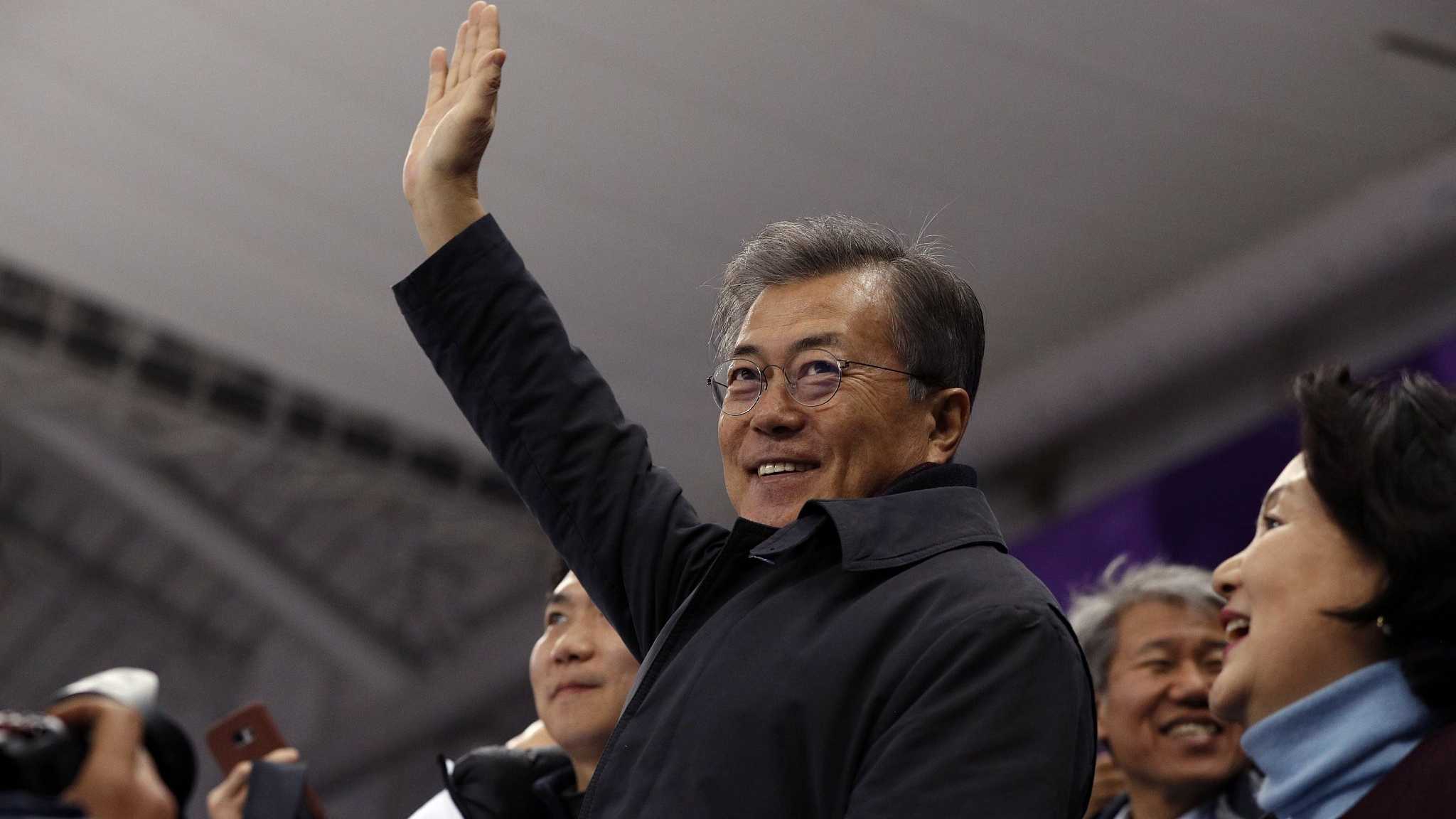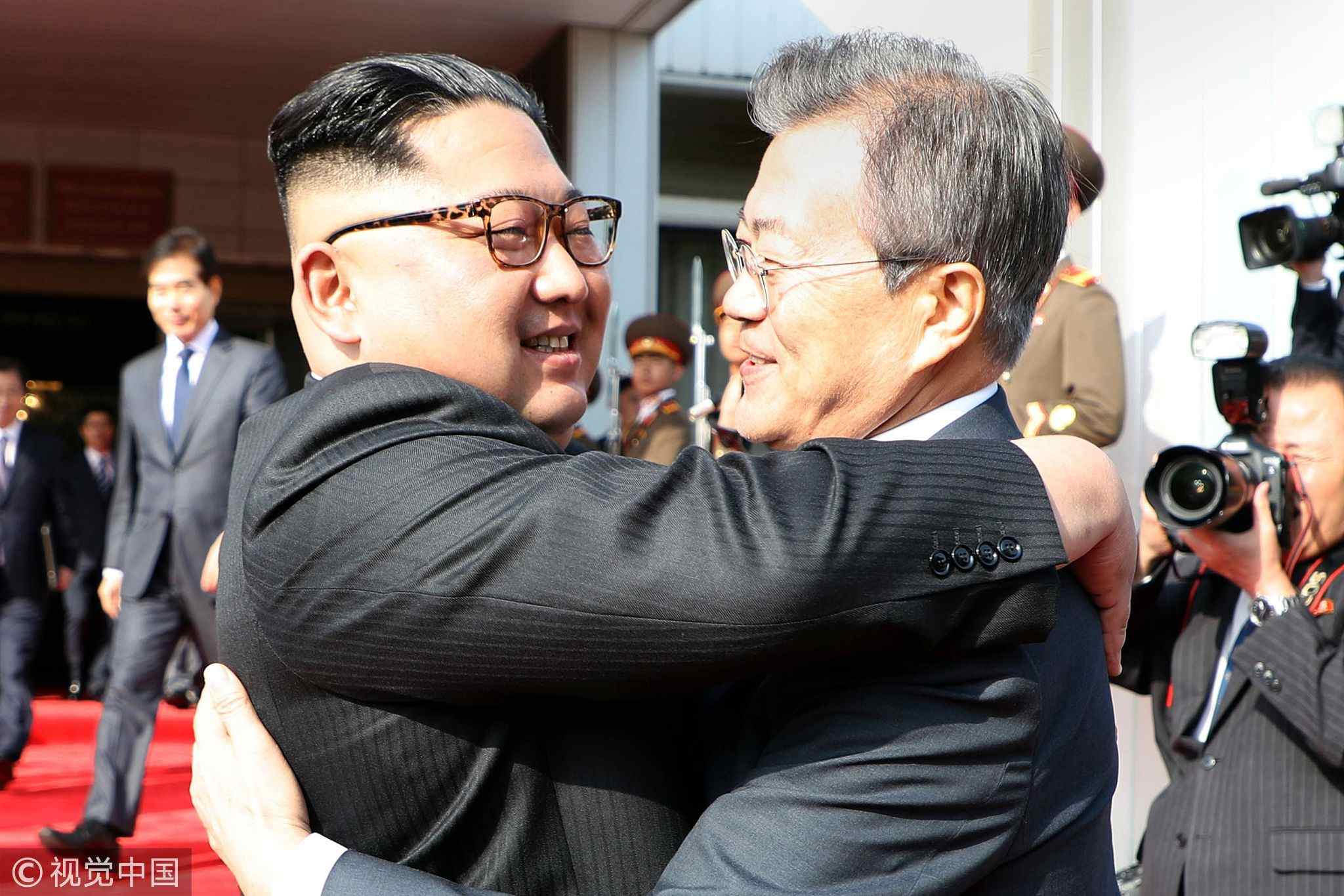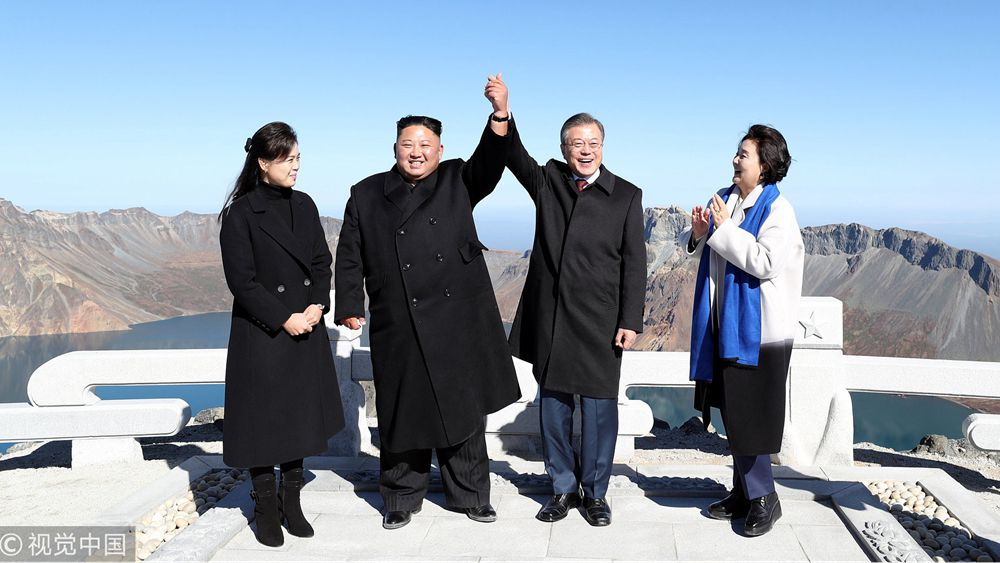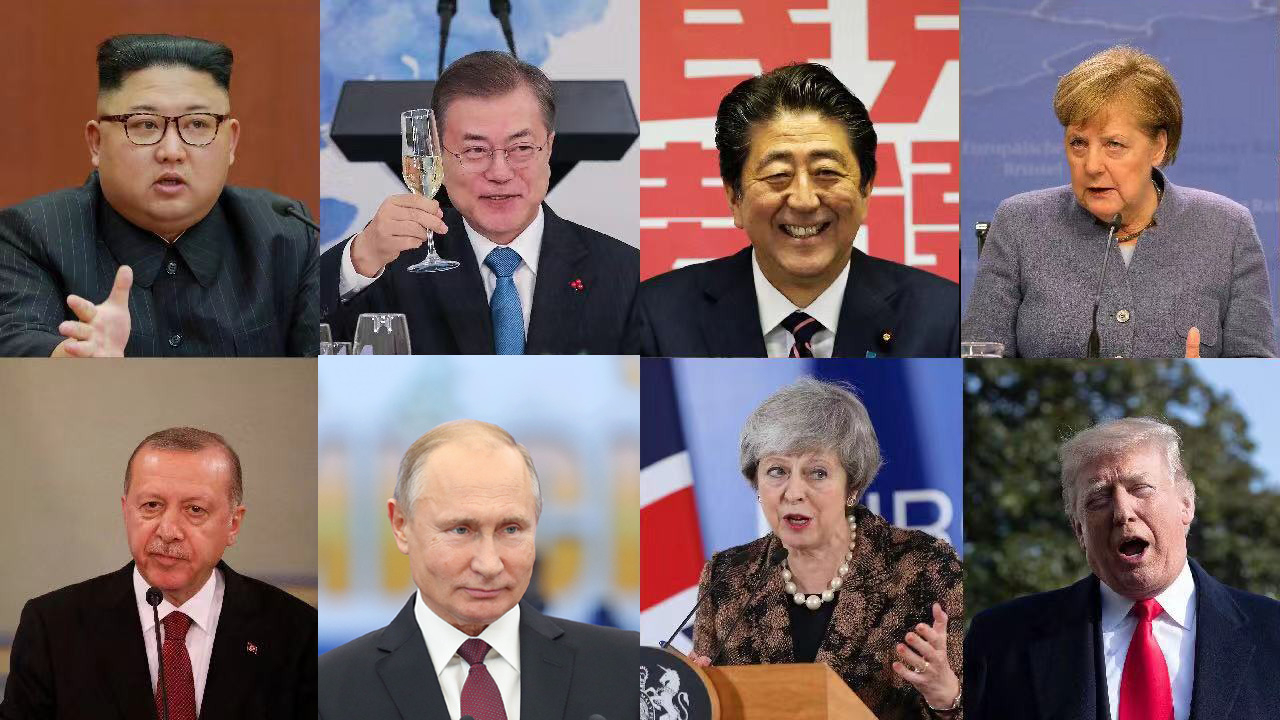
World
18:39, 18-Dec-2018
Global Movers 2018: Catalyst for Peninsular peace – Moon Jae-in
Updated
20:37, 26-Dec-2018
By Yao Yao

While a chance to officially host Kim Jong Un in Seoul might have been pushed back to next year, the Republic of Korea (ROK) President Moon Jae-in won global accolades by meeting the Democratic People's Republic of Korea (DPRK) leader thrice in 2018 and in the process also becoming the catalyst for the summit between Kim and U.S. President Donald Trump.
Thanks to Moon's initiative, Kim became the first DPRK leader to have stepped foot on ROK soil on April 27 as they held the first inter-Korean summit in 11 years at the Peace House on the ROK side of Panmunjom. The historic meeting concluded with the two leaders signing the Panmunjom Declaration and expressing the willingness to cooperate toward a nuclear-free Korean Peninsula.
Just one month after their first meeting in April, the two sides met again on the DPRK side of the truce village of Panmunjom on May 26. The significance of that meeting lay in the fact that it took place just a day after Trump had called off a planned U.S.-DPRK summit. The May meeting is believed to have set the prospective Trump-Kim summit back on track.
Paving the road
Following the footsteps of former ROK presidents Kim Dae-jung (who won the Nobel Peace Prize for his icebreaking visit to DPRK in 2000) and Roh Moo-hyun (Moon's former boss and known to be his best friend who pushed for closer ties between the two Koreas), Moon in September also became only the third ROK leader to visit Pyongyang.

ROK President Moon Jae-in (R) hugs DPRK leader Kim Jong Un after their second summit at the truce village on the north side of Panmunjom, May 26, 2018. /VCG Photo
ROK President Moon Jae-in (R) hugs DPRK leader Kim Jong Un after their second summit at the truce village on the north side of Panmunjom, May 26, 2018. /VCG Photo
While the former two ROK presidents met then DPRK leader Kim Jong Il only once, what makes Moon outshine his predecessors isn't simply his three meetings with Kim within a year, but also the fact that the first two rounds in April and May laid the foundation for the historic Trump-Kim summit in Singapore in June.
Also, compared with Moon's DPRK outreach – launched within a year of his taking charge as the president in May 2017 – Kim Dae-jung met Kim Jong Il in 2000, two years after being elected president. Even Roh Moo-hyun visited Pyongyang in 2007 just a year before his presidency ended.
Besides inheriting Kim Dae-Jung's "sunshine policy" aimed at peace with the DPRK, Moon's family connection with the North has been cited by analysts as a key factor behind the 65-year-old president prioritizing reconciliation. His parents fled to the South from the North in 1950.
"I want to let my 90-year-old mother go back to the DPRK and see how her hometown there looks like now and the livelihood of her relatives living there," Moon was quoted as saying during his presidential campaign in 2017.
Working toward peace
Moon's Pyongyang visit in September not only marked the fifth such summit between the two Koreas since 2000, but was also deemed by the ROK president as reaping the fruits of seeds that were sown in spring.
The Pyongyang Joint Declaration signed during the Moon-Kim summit outlined steps toward ending military tensions and achieving complete denuclearization of the Korean Peninsula, marking the de facto end of the Korean War.

ROK President Moon Jae-in, 2nd from right, and DPRK leader Kim Jong Un pose for photographs on the top of Mount Paektu, September 20, 2018. /VCG Photo
ROK President Moon Jae-in, 2nd from right, and DPRK leader Kim Jong Un pose for photographs on the top of Mount Paektu, September 20, 2018. /VCG Photo
In the backdrop of the touch-and-go nuclear crisis in the Peninsula in 2017, the three meetings undoubtedly fulfilled their missions in a sense. However, these meetings also displayed the pragmatic diplomacy of Moon, a former human rights lawyer.
Achieving regional prosperity
It's worth noting that Moon called for joint prosperity on the Korean Peninsula at his first address to the public in Pyongyang at the September summit, which was also attended by top executives from the ROK's big conglomerates, including Samsung.
Challenged by aging population and the U.S.' trade protectionism, Moon is aiming to boost the economy of his country through expanding cooperation with the DPRK, which is rich in natural and human resources.
Meanwhile, Kim's plan to visit Seoul appears to have hit the road of uncertainty, which is certainly not what Moon might have expected after putting in much of his efforts throughout the year.
The former human rights lawyers' dream of a peaceful and prosperous Korean Peninsula still has a long way to go before it bears fruit.

(top left to right) Kim Jong Un, Moon Jae-in, Shinzo Abe, Angela Merkel; (bottom left to right) Recep Tayyip Erdogan, Vladimir Putin, Theresa May, Donald Trump
(top left to right) Kim Jong Un, Moon Jae-in, Shinzo Abe, Angela Merkel; (bottom left to right) Recep Tayyip Erdogan, Vladimir Putin, Theresa May, Donald Trump
This is the second article of our "World Leaders" series, which
takes a look at eight people who shaped the global political discourse in 2018.
These figures dominated the year’s headlines through high-profile appearances
and maneuvering, forging new relationships and severing old ones. We published Kim Jong Un's profile yesterday. Tomorrow we’ll turn to Shinzo Abe, who's on course to become the
longest serving prime minister in post-war Japan. Stay with us.

SITEMAP
Copyright © 2018 CGTN. Beijing ICP prepared NO.16065310-3
Copyright © 2018 CGTN. Beijing ICP prepared NO.16065310-3